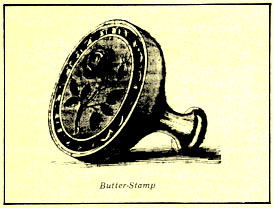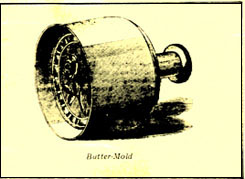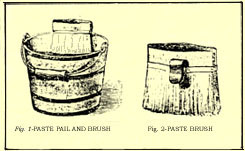|
A little carbolic acid in the paste will keep it sweet and
prevent mold. The paper should be cut to proper lengths, sufficient
in quantity to finish the room, before pasting is commenced. Enough
spare paper should be left at top or bottom, to match the pattern evenly.
These lengths should be laid evenly one over another, and the bench should
be a little longer than the lengths of paper. The paste should be
applied with a broad brush similar to the white wash brushes, and should
be laid on quickly, or the paper will soon become tender. If a piece
of tin be fastened to the brush it can be hooked to the side of the pail
and prevent much “mussing” with the paste. The cheap sorts of wallpaper
should be avoided, if possible.
|

SATURDAY: BAKING AND BATHING
Saturday is
undoubtedly the busiest day of the week. The weekly baking must be
done in preparations for Sunday’s meal completed.
Start the day early and
plan breakfast so as to use little time as possible. Plan the dinner meal
so that it may be fixed in the morning with breakfast to leave the stove
free for baking. In summer most meal preparations may be kept on ice or
in a cool cellar.
With the children home
from school extra help will be available for baking. Enlist the younger
children to roll cookies and watch them in the oven. The more complicated
baking of pies and cakes should be done by the older girls or the woman of
the house.
If there are idle hands,
churning butter may be done on Saturday. Although dash churns are common
many housewives are finding barrel churns to be very satisfactory.

|
|
They contain generally twenty-five to forty
per cent of clay, and a very common material for the pulp is cow-dung;
only a very small proportion consists of fiber of rope, matting, or other
coarse material of any strength, and in putting it on a wall it will often
fall to pieces in the hands. Two persons are required to lay on
paper with rapidity, one to paste and one to apply paper. When the
paper is pasted it should be handed to the person on the ladder, who holds
it about a foot from the top end, and lays it evenly against the wall at
the top, allowing the upper end to hang over on the backs of the hands.
By looking down the wall it may be seen when it matches the
previously-laid length, and should then be brought gently to the wall, the
backs of the hands then pressed against the wall.
Following these instructions, any room should be papered with
great satisfaction.
|


